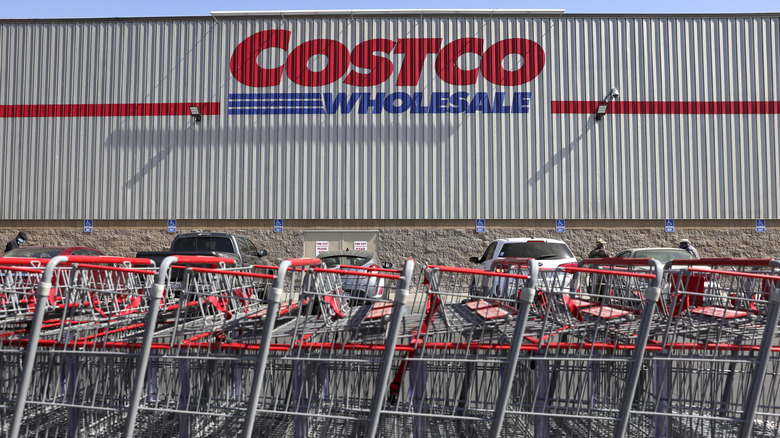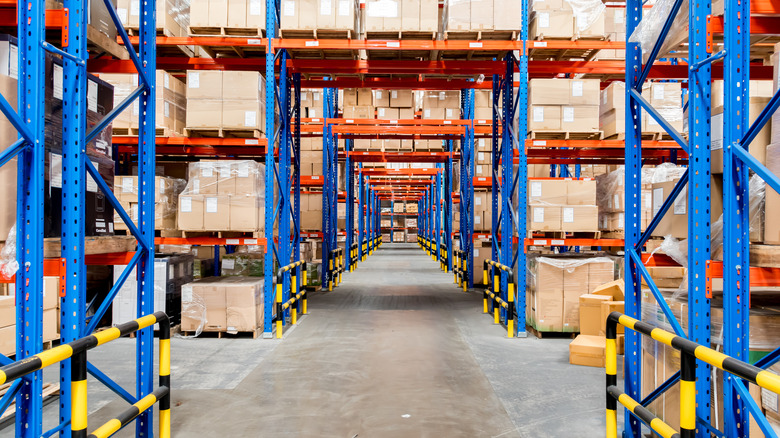Why Costco Randomly Moves Products Around The Store Like A Treasure Hunt
You follow a specific grocery route through your Wegmans or Costco, and you rarely deviate from it. You've memorized the store's layout, and your list is written in the exact order you go through the aisles — produce first, then meat and dairy, and down a few aisles for your canned goods or your indulgences like a party-size bag of Doritos or a six-pack of that IPA microbrew. Then you're done, in and out in record time despite the crowds and other temptations. Your health and your wallet are grateful.
But then, one day, you arrive at the store armed with your list, and it pretty much immediately falls apart: You can't find anything. The bulk foods aren't where they usually are; that's now the candy aisle. The coffee aisle has been replaced by condiments and your crunchy indulgences are now taken over by soda and bottled water. All of this rearranging sends you on a rage and confusion-fueled treasure hunt all over the store, fighting the crowds and clutching desperately at your list to find what you need. You finally make it to the checkout counter, unload, and then have an out-of-body experience when the cashier tells you your total, which is way more expensive than your usual shopping trip. Then you realize that on your way to finding what you needed, you may have picked up a few things that caught your eye, like that new flavor of Oreo and that funky tea blend. So what gives?
Stores are betting on human psychology to get you to buy more stuff
Grocery and wholesale stores like Costco have one goal in mind — to get you to spend more time in the store and therefore increase the likelihood that you'll spend more money. And the way they achieve this is by intentionally moving things around and sending you on a wild goose chase to track down what you need while betting that on the way, you'll pick up a few impulse purchases like the family pack of Oreos that'll be empty by Sunday or two gallons of olive oil you definitely won't go through before it goes rancid.
Rearranging merchandise is especially common in grocery stores. Shoppers are creatures of habit, and we usually go directly to where we know we'll find what we need and get out. Grocery stores know this but want us to spend more money, so they rearrange stuff and make it harder to find what we need and increase the chances of impulse purchases. When stores do this, they're also banking on human psychology — impulse buys make us feel better, even temporarily — so stores enable those spur-of-the-moment purchases by forcing you to wander. Costco doubles down on this by not labeling the aisles so you can find things quicker; they're numbered instead, forcing you to meander and resist temptation.
So, friend, the next time you find yourself in a daze wandering Costco, stay strong. You don't need that four-person sauna or that 7-pound tub of Nutella.

